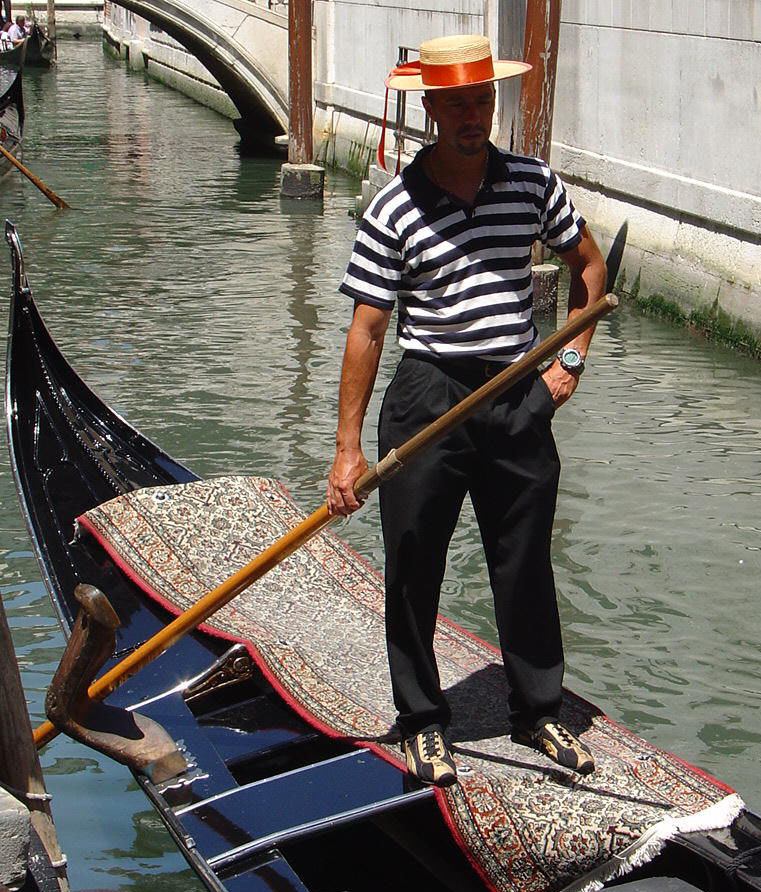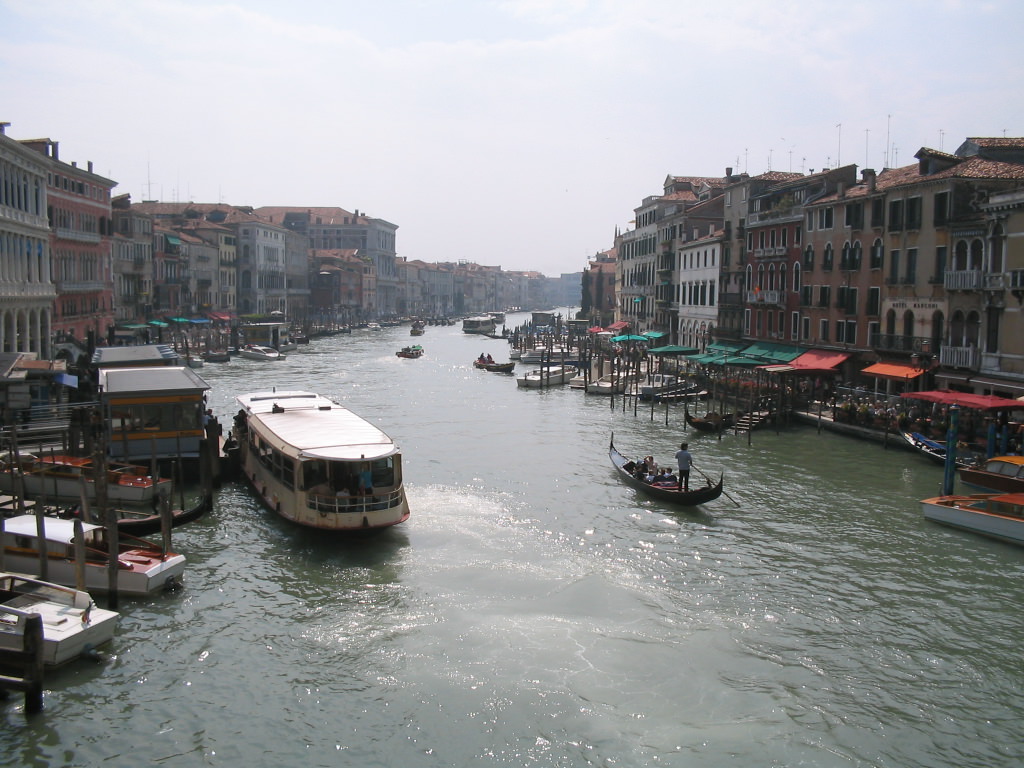When one thinks of Venice, images of floating down canals while being serenaded by a strapping gentleman in a striped shirt typically come to mind. While indulging in this cliché is definitely recommended during a trip to Italy’s “city of water,” gondolas are  not the only option for transportation around Venice, you can also take a vaporetto, motoscafo, a traghetto or a water taxi. Here’s the difference.
not the only option for transportation around Venice, you can also take a vaporetto, motoscafo, a traghetto or a water taxi. Here’s the difference.
Gondolas
Though taking a Gondola ride is a wonderful experience, it will cost you. The city of Venice sets official rates for gondola rides (starting at €80 for 40 minutes and an additional €40 for each 20 minutes after that; after 7 p.m., the rate is hiked to €100, with €50 for each additional 20 minutes, all of this plus a tip, of course). However, many gondoliers consider these rate structures to be “guidelines” but not set in stone and, therefore, charge much more. “Extras,” such as singing, will cost you even more. It’s a good idea to negotiate the total rate with the gondolier before getting in the boat. Gondola rides can be arranged through your hotel, but be prepared for the concierge to tack on a hefty surcharge.
Water-bus (Vaporetto and motoscafo)
 For a less expensive option, hop on the convenient vaporetti and motoscafi water-buses to get from one end of the city to the other. They run continuously throughout the day, and it is rare to have to wait for more than a few minutes to catch one. The No.1 vaporetto stops 13 times between the Piazzale Roma and the Piazza San Marco.
For a less expensive option, hop on the convenient vaporetti and motoscafi water-buses to get from one end of the city to the other. They run continuously throughout the day, and it is rare to have to wait for more than a few minutes to catch one. The No.1 vaporetto stops 13 times between the Piazzale Roma and the Piazza San Marco.
The standard vaporetto fare is €6,50. However, you can save quite a bit of money with a 12- to 72-hour “Venice Tourist Travel Card” or a Venice Connect Pass available at the Venice transit authority. If you are planning to be in Venice for a while (living, studying, etc) be sure to check out the “Cartavenezia” discount transportation card.
Water taxi
Quite a bit pricier than the waterbus is a water taxi (they should call them water limousines). They typically do not have meters, so ask the driver to be specific about the price before getting on board. There are extra fees for radio- dispatched service and many water taxis have beverages for purchase.
Traghetto
These inexpensive gondola ferries (traghetto is the Italian word for ferry) are a necessity for crossing the Grand Canal at seven points between the railroad station and the Santa Maria della Salute church.You can find the traghetto stops by following the yellow signs down to the canal.
Foot Traffic and Bikes
Motorized land transportation is rare is Venice. Most locals and tourists walk or ride bikes (or mopeds) through the city’s narrow streets. Bikes can be rented at a variety of locations throughout the city.
Dont’ Miss: Our Editor’s Picks for where to stay in Venice.
Written by Jen Westmoreland Bouchard for EuropeUpClose.com

Durant Imboden
Friday 3rd of August 2012
One quibble: Bicycles are illegal within the historic center (unless you're a child).Ditto for rollerblades, mopeds, and motorscooters.
If you want to bike, you'll need to go to Mestre on the mainland or Venice's resort island, the Lido.
europeupclose
Friday 3rd of August 2012
Thanks so much for that clarification.
Geetanjali
Tuesday 18th of October 2011
I personally felt that the gondolas were very expensive and the vaporetta is a good option :)